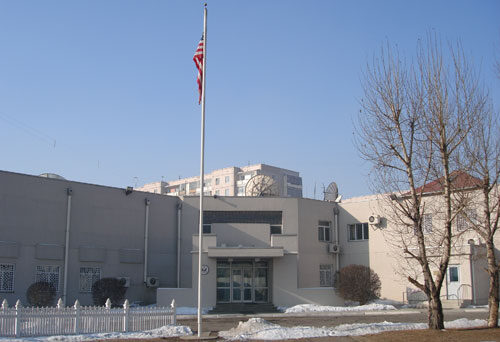
U.S. Embassy Ulaanbaatar, Mongolia
For roughly 200 years prior to 1911, what is today the nation of Mongolia was contained within the territorial borders of the Empire of China. After the collapse of that empire, a group of Mongolia nationalists established a new republic in 1924, with the assistance of the Soviet Union. Mongolians affirmed their independence in a plebiscite in October 1945, but because Mongolia remained close to the Soviet Union, relations between Mongolia and the United States were slow to develop.
The United States established diplomatic relations with Mongolia in 1987. Bordered by Russia and China, Mongolia describes the United States as its most important “third neighbor.” In 2019, the United States and Mongolia upgraded their bilateral relationship to a Strategic Partnership. After nearly seven decades of socialist one-party rule and close alignment with the Soviet Union, the Mongolian people supported a peaceful democratic revolution in 1990. Since adopting democracy, Mongolia has, as of June 2021, conducted eight presidential and eight legislative elections. The United States has sought to assist Mongolia’s market-oriented reforms and to expand political, cultural, educational, and defense cooperation.
Global commodity prices and the Chinese economy affect Mongolia’s economic growth rates, which have fluctuated widely in recent years. A balance of payments crisis prompted the International Monetary Fund (IMF) to implement a $425 million Extended Fund Facility from 2017 to 2020. In June 2020, the IMF approved an additional $99 million Rapid Financing Instrument disbursement to help Mongolia cope with the economic fallout of the COVID-19 pandemic. The Mongolian economy contracted just more than five percent in 2020 due to the pandemic, but by 2021 was set for a recovery helped by higher prices for copper and coal, two of Mongolia’s major exports. Mongolia’s rank in the World Bank’s Ease of Doing Business index fell from 56 (of 189 economies) in 2014 to 81 (of 190 economies) in 2019.
With 90 percent of Mongolia’s exports – primarily minerals – going to its southern neighbor, China remains Mongolia’s most significant economic partner. China also supplies a third of Mongolia’s imports, mostly in consumer and capital goods. About 60 percent of the government’s bilateral debts and 82 percent of central bank debt are held by China. China is also Mongolia’s second-largest source of foreign direct investment. (Canada is the largest source of FDI, primarily in the mining sector. The United States ranks seventh.)
Today, the U.S. embassy is in Ulaanbaatar.
Map Link:
Source:
United States, Department of State, Office of the Historian and Bureau of East Asian and Pacific Affairs
Social Links:
https://www.facebook.com/USEmbMongolia/